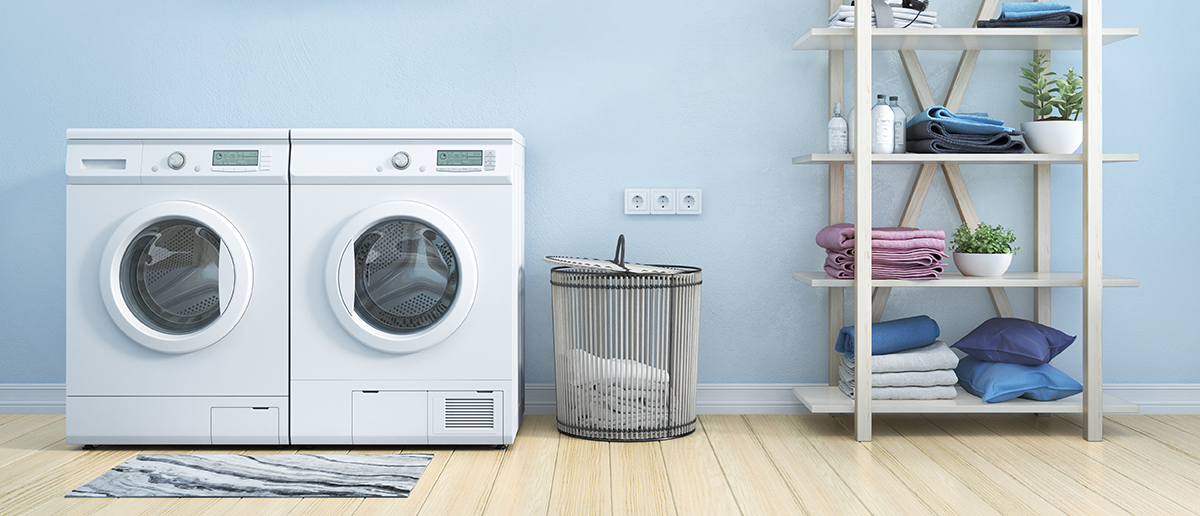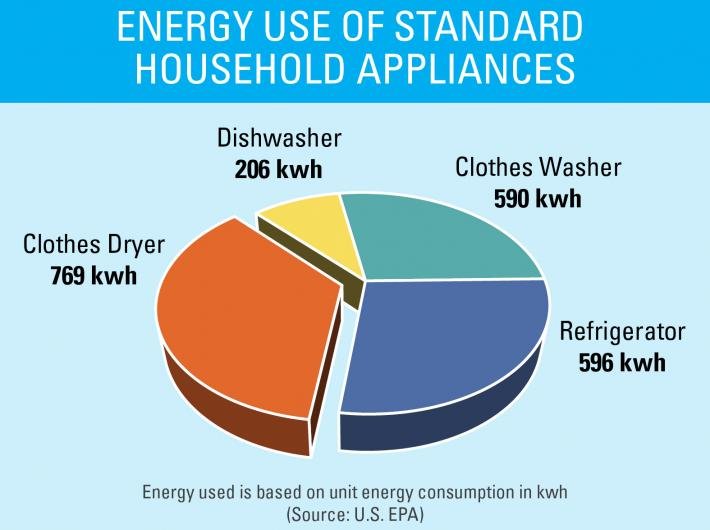
10 Tips to Save Energy in the Laundry Room
Laundry isn’t the most exciting topic. In fact, when it comes to mundane household activities, folding laundry is about as compelling as watching the grass grow.
But laundry is more than just a necessary chore; it’s also a major consumer of home energy. Between electricity and hot water, a washer and dryer can account for about 10 percent of total energy use in your home. That means the decisions you make about which models to purchase and settings to use can make a significant difference in your energy bill.

Taken together, washers and dryers use a lot of energy, so applying efficiency here can pay dividends. (ENERGY STAR®)
Washing
Get an efficient washing machine – An ENERGY STAR®-certified washing machine will use about 20 percent less energy than one that hasn’t earned that designation. Get a front-loading machine to add an additional 25 percent in efficiency.
Use cold water – According to ENERGY STAR®, water heating uses about 90 percent of the energy it takes to operate a clothes washer. Unless you’re washing clothes with oily stains, or clothes and bedding used by a sick person, cold water will generally do a good job. Be sure to buy cold-water detergent to ensure the best result. And if you’re still skeptical, switching to warm water from hot will still reduce energy use by half.
Fill ’er up – A washer will use the same amount of energy regardless of the size of the load, so whenever possible, wait until you have a full load's worth to do a wash. What constitutes a full load will vary from washer to washer, and should be in the manual, but a rule of thumb is to add clothes loosely (not packing them in), leaving a six-inch gap at the top.
Use a faster spin cycle – If your washer has the option, use a faster and/or longer spin cycle, which extracts more water from the clothing and will shorten the drying time.
Drying
Use a clothesline or indoor drying rack – Just as walking or riding a bike is the best way to save gas (or kWh, if that’s what your car uses), the best way to save energy drying your clothing is to hang them up and let nature take its course. This will also help your clothes to last longer.
Go gas – If you have natural gas at your home, a gas dryer is a good choice. Gas dryers tend to cost a bit more upfront but they save money over time thanks to using 30 percent less energy than electric models. They also dry clothes in about half the time. (Curious about receiving natural gas service at your home? Learn more.)
Consider a heat pump dryer – Heat-pump dryers are the most energy-efficient type of dryer. They work by pulling moisture from clothing without the need for heating element, reducing energy use by nearly 30% according to ENERGY STAR®. However, they are more expensive than other options and, according to Consumer Reports, took about twice as long to dry a sample load than a traditional electric dryer, so keep that in mind.
Keep it clean – Most people know regularly emptying the lint trap is important to keeping a dryer running efficiently and safely. If you use dryer sheets, you should also scrub the lint trap's filter because dryer sheets leave a film that can impede air flow over time. In addition, make sure to have your moisture sensors clean (if your dryer has them) as well as the vent and duct.
Use low heat – You’ll use less energy with a longer dry cycle at a lower heat setting than with a shorter cycle at a higher temperature.
Play ball – Wool or rubber dryer balls help keep your clothes separated, which increases air circulation and reduces static. They also absorb some moisture, further reducing drying times.


